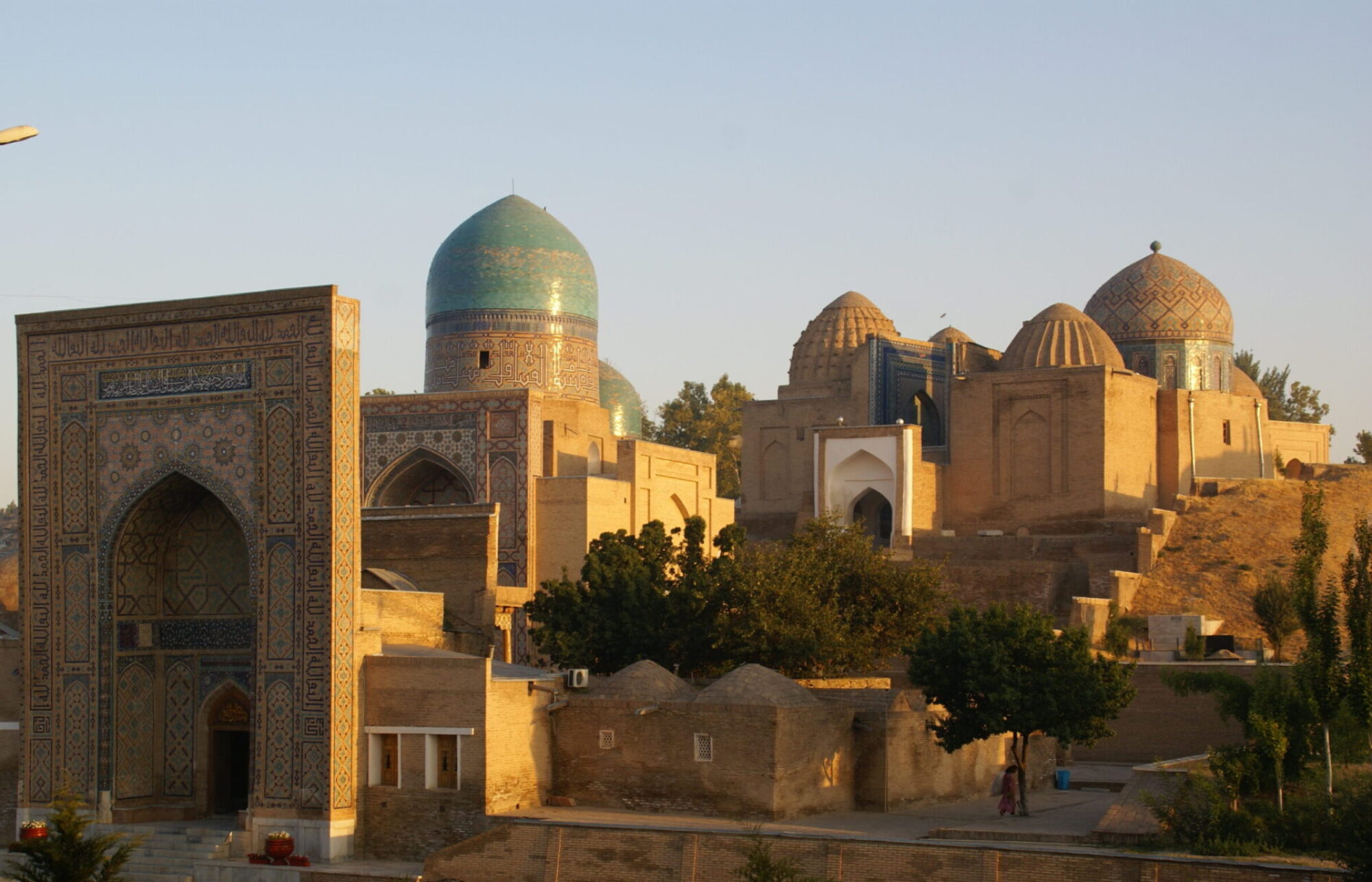The Timurid dynastic mausoleum of Gur-i Amir (early 15th century) was commissioned by Timur in August 1404 for his beloved grandson and heir presumptive Muhammad Sultan (d. 1403). The mausoleum was erected in the southwestern part of Samarqand, adjacent to the pre-existing complex of Muhammad Sultan (late 14th century) consisting of a two-storey madrasa (to the east) and a domed khanaqah (Sufi lodge) to the west. All three structures are arranged around a central open courtyard with a main entrance portal to the north. The octagonal mausoleum is covered with a ribbed dome decorated with turquoise tile mosaic. The interior space is adorned with a dado of octagonal onyx tiles, crowned by a muqarnas cornice. The upper walls are decorated with papier-mâché details in gold and blue. The cenotaphs of Timur, his sons Shahrukh and Miranshah, his grandsons Muhammad Sultan and Ulugh Beg, and Timur’s spiritual consort Sayyid Baraka, are situated in the centre of the main mausoleum, surrounded by a carved marble screen. The actual burials and tombstones are in the crypt below, closed to the general public in accordance with Islamic burial rituals, in which the sanctity of the deceased should not be disturbed.
In 1425 Ulugh Beg erected a gallery to the east, which serves as the main entrance to the mausoleum. Most likely, this enlarged compound included another gallery to the south, of which only a few arches remain, and a monumental complex to the west with a central domed space. By the end of the 17th century, the madrasa had been abandoned and the dome of the khanaqah had collapsed. The two remaining minarets were also destroyed; the southeastern one collapsed after a major earthquake in 1886 and the southwestern one was ruined on 18 May 1903.
The systematic study of Samarqand’s monuments was initiated in 1895 when the Archaeological Commission sent an expedition under the supervision of Nikolai Iv. Veselovskii. The expedition resulted in the publication of the only volume of the lavishly decorated catalogue The Mosques of Samarqand (1905), solely dedicated to Timur’s dynastic mausoleum of Gur-i Amir and financed by Empress Aleksandra Fedorovna (1872–1918). This prototype of an officially politicized edition on Timurid architecture depicted Gur-i Amir as an idealized work of art, stripped of any religious or socio-cultural importance.
During the Soviet period, Gur-i Amir was remodelled in a series of restoration campaigns. The central southern façade was completely rebuilt, the remains of the Muhammad Sultan complex were reconstructed and the entrance portal to the north was renovated with reinforced concrete. During the celebration of Timur’s 660th jubilee in 1996, the whole ensemble was refurbished; the minarets were erected anew, new epigraphy was added to the central courtyard façade and many original Timurid tiles were substituted with modern majolica reproductions.

